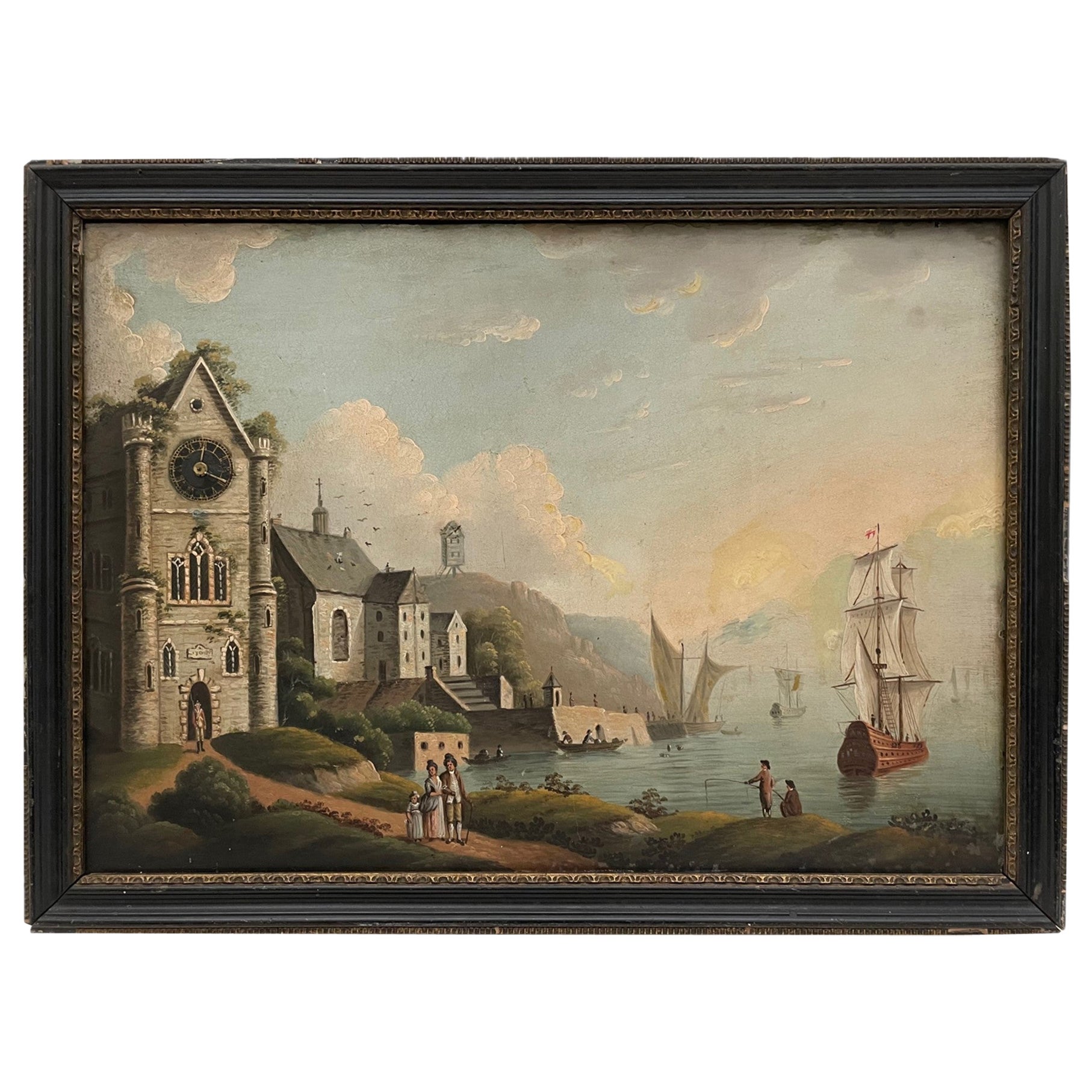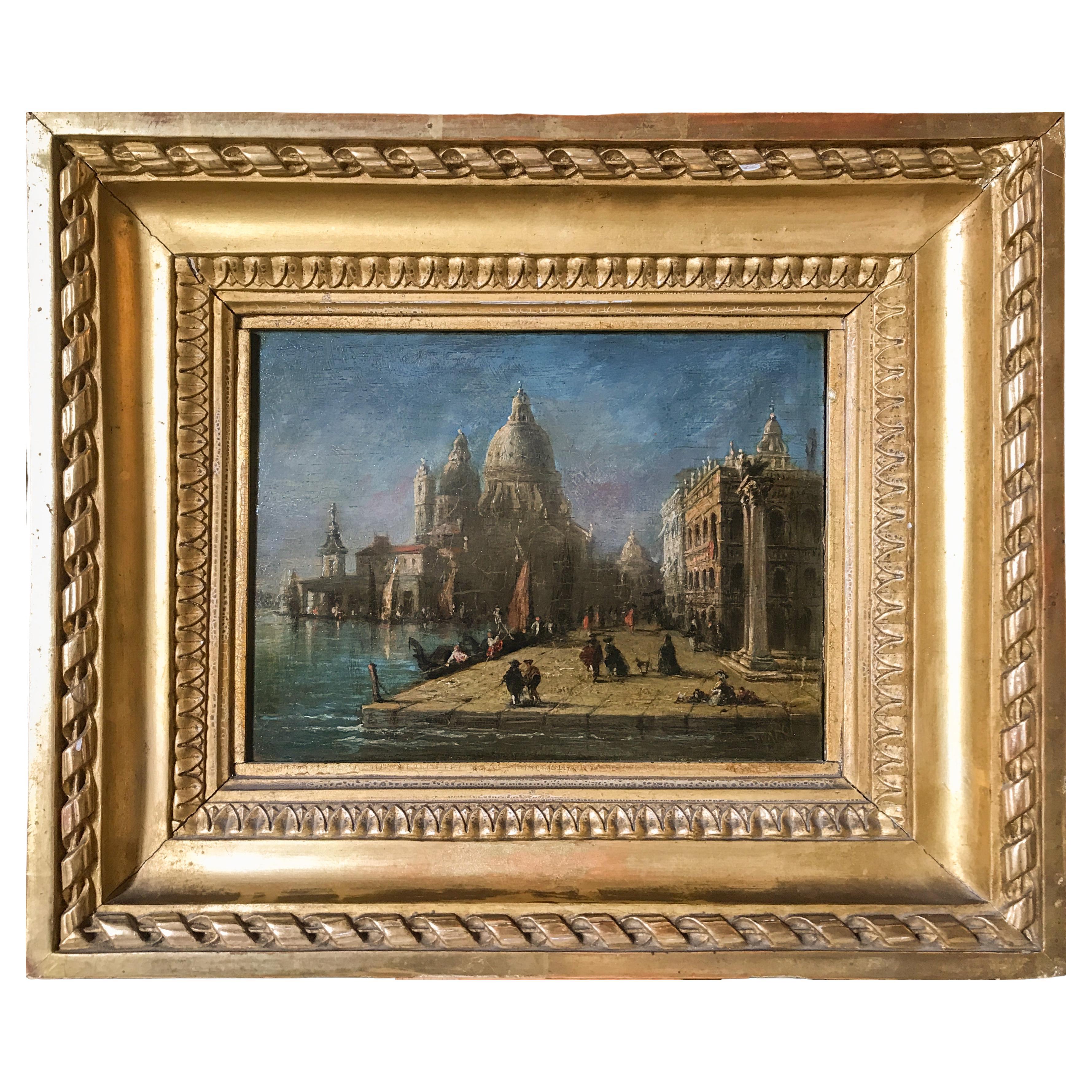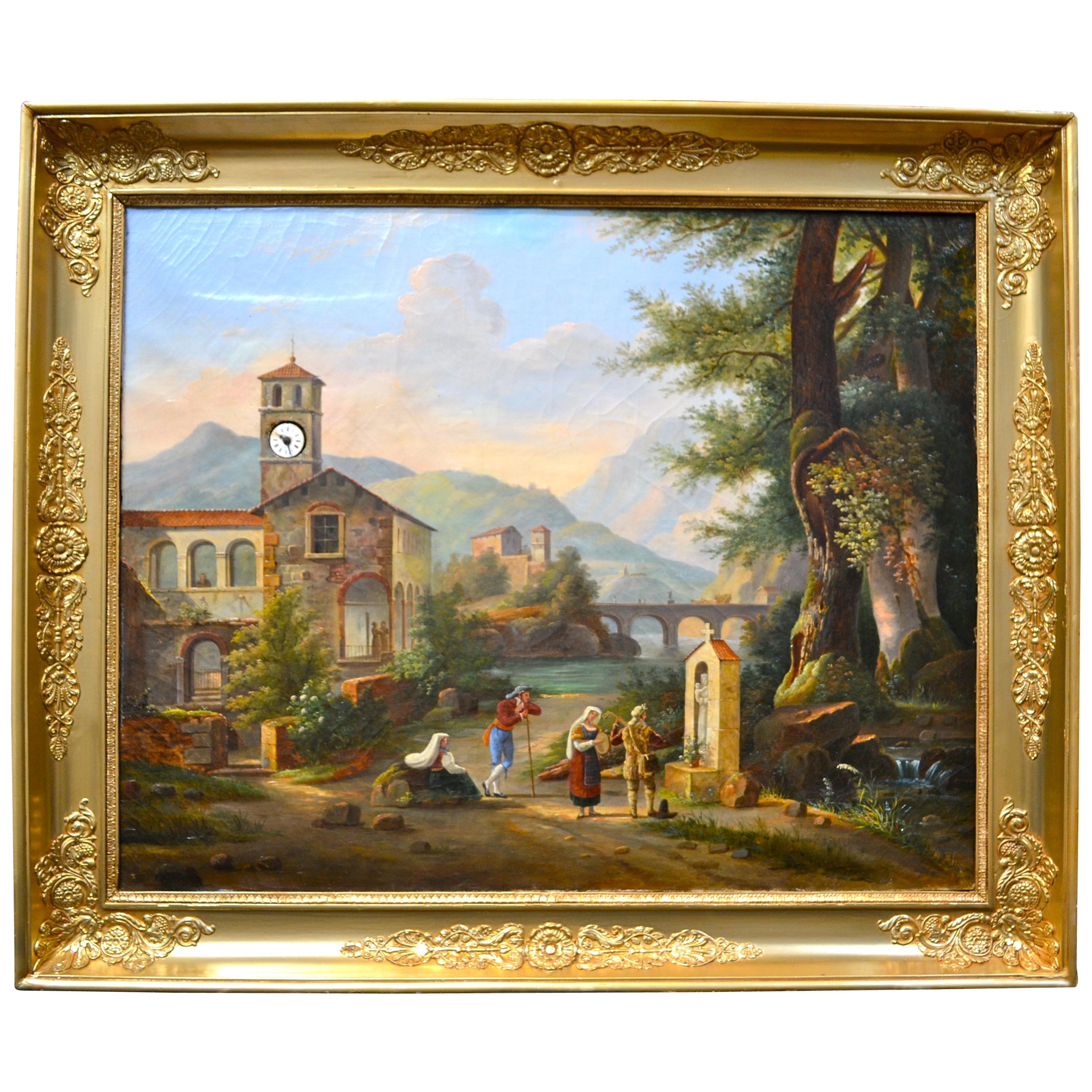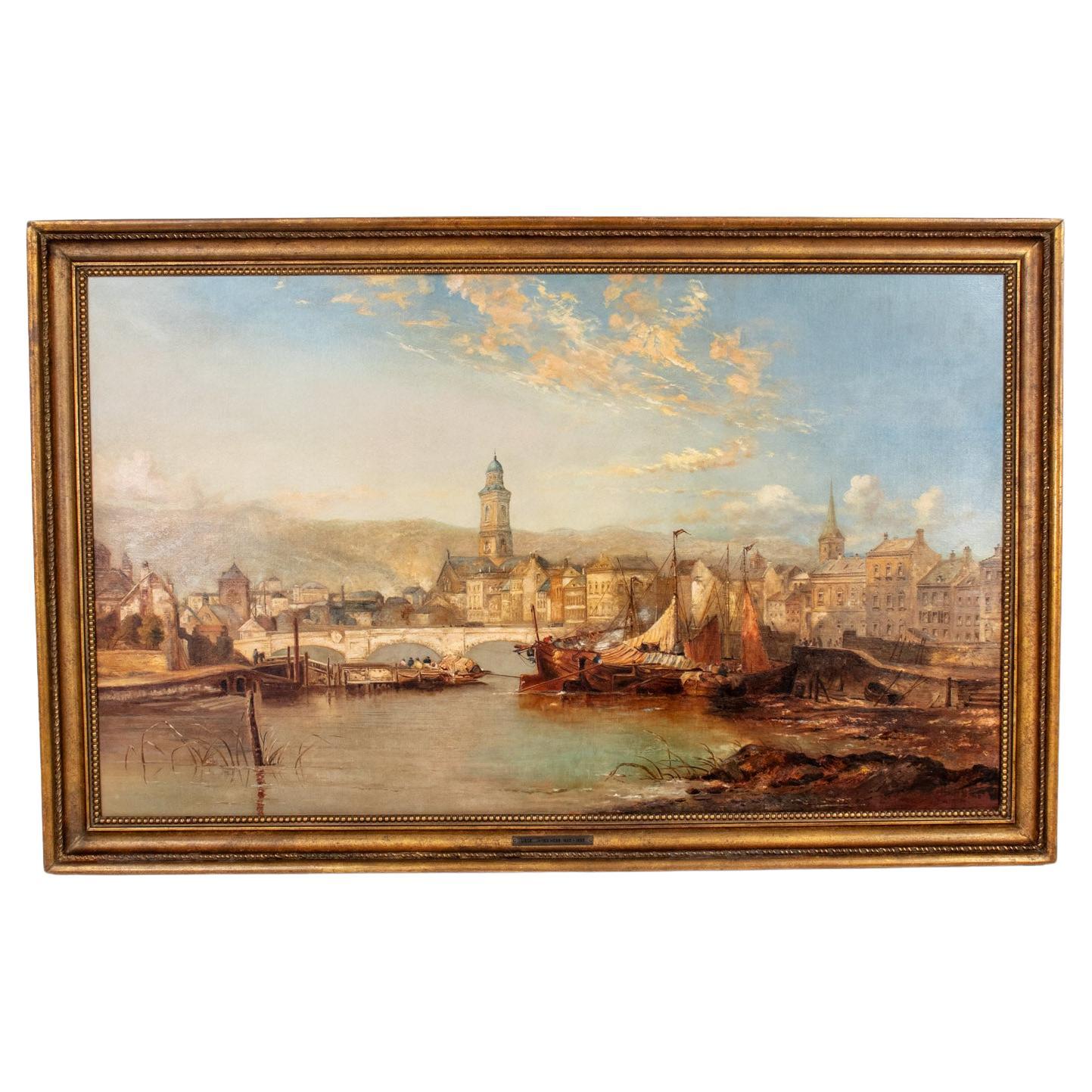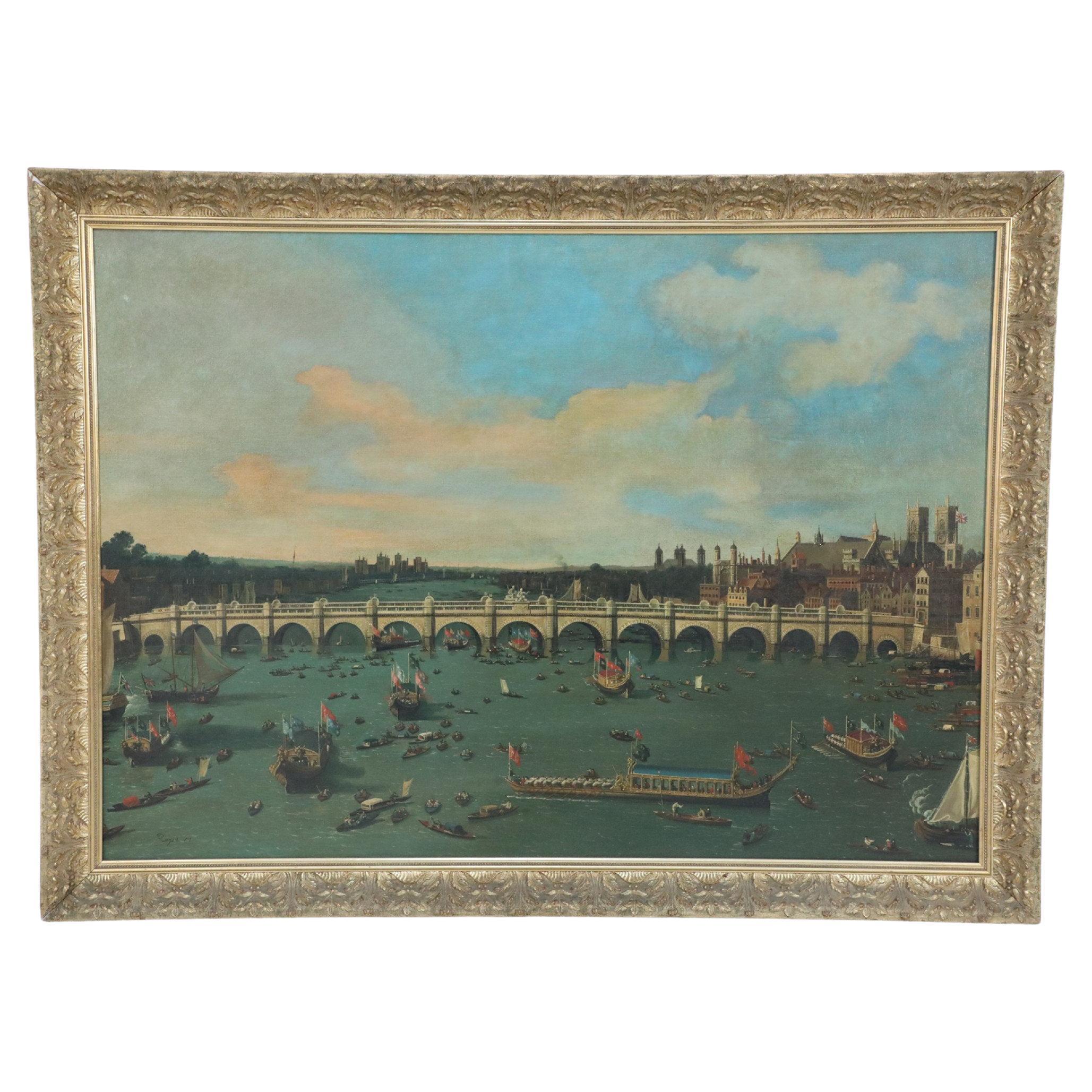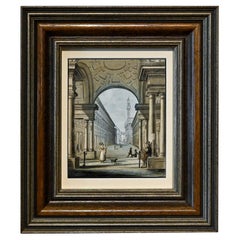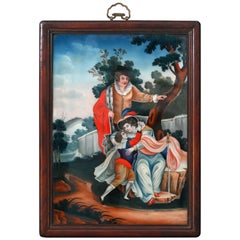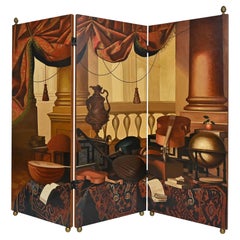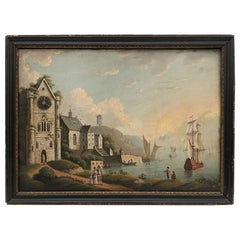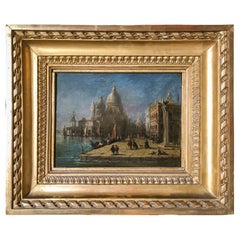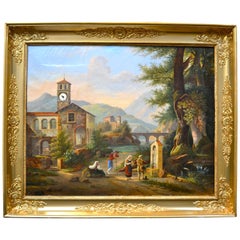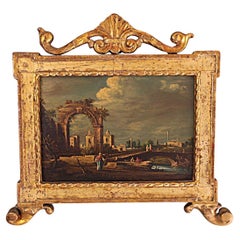Items Similar to 19th Century Capriccio Jeremias August Urlaub Clock Picture Germany
Want more images or videos?
Request additional images or videos from the seller
1 of 6
19th Century Capriccio Jeremias August Urlaub Clock Picture Germany
$16,521.01
£12,186.79
€13,800
CA$22,890.69
A$24,839.88
CHF 13,162.95
MX$304,649.08
NOK 162,890.55
SEK 153,922.95
DKK 105,084.36
About the Item
Capriccio from Jeremias August Urlaub, born 1784 in Hanau, death 1837 in St.Petersburg belongs to an important franconian painter family.
Original magnificent and special frame, oil on canvas , clockwork doesn´t work
Measures: B 121cm, H 97cm.
- Dimensions:Height: 38.19 in (97 cm)Width: 47.64 in (121 cm)Depth: 3.94 in (10 cm)
- Style:Empire (In the Style Of)
- Materials and Techniques:
- Place of Origin:
- Period:
- Date of Manufacture:circa 1825
- Condition:Wear consistent with age and use. The clock has to get repaired.
- Seller Location:Epfach, DE
- Reference Number:1stDibs: LU5243218953132
About the Seller
4.9
Vetted Professional Seller
Every seller passes strict standards for authenticity and reliability
Established in 1986
1stDibs seller since 2020
60 sales on 1stDibs
Typical response time: 3 hours
- ShippingRetrieving quote...Shipping from: Epfach, Germany
- Return Policy
Authenticity Guarantee
In the unlikely event there’s an issue with an item’s authenticity, contact us within 1 year for a full refund. DetailsMoney-Back Guarantee
If your item is not as described, is damaged in transit, or does not arrive, contact us within 7 days for a full refund. Details24-Hour Cancellation
You have a 24-hour grace period in which to reconsider your purchase, with no questions asked.Vetted Professional Sellers
Our world-class sellers must adhere to strict standards for service and quality, maintaining the integrity of our listings.Price-Match Guarantee
If you find that a seller listed the same item for a lower price elsewhere, we’ll match it.Trusted Global Delivery
Our best-in-class carrier network provides specialized shipping options worldwide, including custom delivery.More From This Seller
View All19th Century, Aquarell, Florence, Uffizien
Located in Epfach, DE
Architectural view of the Uffizi Gallery in Florence, Watercolour on Paper, not signed.
The fine watercolor work in delicate shades of brown, blue and g...
Category
Antique 1830s German Biedermeier Paintings
Materials
Paper
19th Century Reversed Glass Painting China for European Market Verre Eglomisé
Located in Epfach, DE
The reversed glass painting has been made circa 1800. The picture has beautiful colors and is in the original condition. The beautiful painting is also in the original frame.
Category
Antique Early 19th Century Chinese Paintings
Materials
Art Glass
20th Century Painted Screen Italy Musical Instruments Carpets
Located in Epfach, DE
Very decorative screen painted with musical instruments,
consisting of three folding panels of 72.5 cm, the screen stands on brass ball feet, the ends form pine cones also made of br...
Category
Vintage 1980s Italian Paintings and Screens
Materials
Wood
Still Life of an Kitchen Interieur German 18..Jhdt. Oil on Canvas
Located in Epfach, DE
Still Life of an Kitchen Interieur , German , 18th century,
Oil on canvas.
Category
Antique 1740s German Baroque Paintings
Materials
Canvas
18th Century Altar Modell, South Germany, with Original Painting, Wood
Located in Epfach, DE
18th century Altar Modell, South Germany, with original painting, wood
A rare altar model with original painting, in the middle Jesus Christus and on the ...
Category
Antique Late 18th Century German Louis XVI Models and Miniatures
Materials
Wood
19th Century Candlestick Lightshade Vienna by Balthasar Wigand Mother of Pearl
Located in Epfach, DE
Mother of pearl light shade or candlestick by Balthasar Wigand Vienna about 1810-1820 with very fine painting from the Galitzerberg in Vienna.
B...
Category
Antique 1810s Austrian Empire Candle Sconces
Materials
Bronze
You May Also Like
19th Century Swiss Mechanical Clock Painting, Circa 1820
Located in Vero Beach, FL
19th century Swiss mechanical clock painting circa 1820
This antique and unique clock painting is created in oil on metal circa 1820 in Switzerlan...
Category
Antique 19th Century Swiss Biedermeier Paintings
Materials
Metal
Venetian Capriccio, Santa Maria della Salute - Italian School, 18th century
Located in TEYJAT, FR
Venetian Capriccio with Santa Maria della Salute and Figures
Italian School, 18th Century
Oil on Oak Panel
Dimensions: Panel – 16 x 21.5 cm (6.3 x 8.5 in).
Provenance: Private Europe...
Category
Antique Late 18th Century Italian Baroque Paintings
Materials
Oak
19 Century Italian Clock Landscape Painting
Located in Vancouver, British Columbia
An early/mid-19th century Italian clock painting indistinctly signed on the lower right corner. The oil painting is set in a period Empire gilt frame and d...
Category
Antique Mid-19th Century Italian Empire Paintings
Materials
Canvas
Antique Venetian capriccio oil painting
Located in Seaford, GB
Francesco Guardi Venice Oil Painting – Venetian Art in the Manner of Guardi
Exquisite 19th-Century Venetian Oil Painting
Experience the timeless elegance of Venetian art with this r...
Category
Early 20th Century Paintings
Materials
Pine, Paint
$1,714 Sale Price
20% Off
19th Century Oil on Canvas Attributed to James Webb of The Liege
By James Webb
Located in Chicago, IL
This striking oil on canvas attributed to James Webb titled "Liege" depicts a river scene in the city of Liege, Belgium. This exquisite cityscape features various boats docked at port, alongside crowds of passers-by. The painting recedes into mountainous views before hazily meeting a blue sky, speckled with clouds. This atmospheric landscape invites the viewer to peruse the past and get lost in the intimate details of Liege, Belgium.
The painting is nested in a gorgeous statement giltwood frame crafted from wood and gesso. The frame is an empire-style frame with bead trim on the sight edge and ribbon trim on the concave profile.
James Webb (1825-1895) was a British painter specializing in marine views and landscapes, depicting both England and continental Europe. He was born in London to a family of fellow painters, and went on to study at the Royal Academy. He exhibited in London at the Royal Academy and the British Institute between 1850 and 1888, and many of his works still hang in London in the collections of the Victoria and Albert Museum and the Tate Gallery. His painting style was inspired by English...
Category
Antique 19th Century Belgian Victorian Paintings
Materials
Canvas, Paint
Grand Tour Style MidCentury Italian Venetian Oil Painting of a Canal Scene
Located in Queens, NY
Italian Venetian-style (mid 20th Century) oil on canvas seascape painting depicting a long stone bridge over a busy canal filled with boaters with a city in the background under a bl...
Category
20th Century Rococo Paintings
Materials
Canvas, Wood, Giltwood
More Ways To Browse
Gary Janis
Grisaille Neoclassical
Hawaiian Glass
Jean Baptiste Pillement
Jesus And Mary Painting
John The Baptist Head
Lee Reynolds On Sale
Maria Astadjov
Miniature Brass Frames
Museum Gilt Frame
Myanmar Paintings
Oil Painting Serbia
Pagoda Painting
Painting Wall Lamp
Paintings Of Clipper Ships
Paul Delaroche
Piero Della Francesca
Prize Cow
